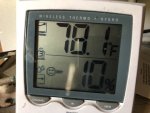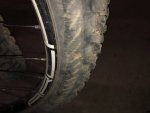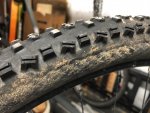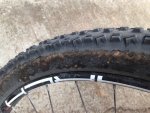Pull your valve core once every few months, position the stem at 6:00, and check the sealant level with a dipstick. If it's low, add more. Not checking your sealant level once every few months is not a tubeless system failure, that's an owner not doing mainenance failure.
If you tear a tire sidewall out, you're gonna need more than a tube to get you going again. How many tire sidewalls have you torn out? I never have.
And if you prang a rim while recreating some kind of Nitro Circus stunt on your expedition bicycle, keep in mind that the tire was BETWEEN the rim and whatever you hit, so the tire is probably done too, in which case a tube alone isn't going to do anything to get you going again. If you prang a rim to the point that your tubeless system won't seal and you somehow DIDN'T destroy the tire in the process, just pound it flat with a rock and go again. I personally have never pranged a rim that bad, even with custom-built flyweight cross-country race wheels, so I really don't worry about it.
If you're gonna carry a spare anything, just carry a spare tire, folded up in your bike bag.
You're right, one solution surely must fit all. Riding daily in Portland, OR, must be
exactly like riding daily in the desert of western Colorado, eastern Utah, what with single digit humidity and triple digit summer and subzero winters. It's 10% relative humidity here at our house right now.

Both Stan's and Orange stop being fluid in a couple of months for me. I remove the tire and peel off sheets of dried sealant from inside the tire carcass a couple of times a year. Sometimes I'm not perfect and let them go longer than I should and inevitably they pick up a cactus needle (you have those in Portland, right?) or goat head and the sealant doesn't flow anymore.
Torn sidewalls? I dunno, a few maybe. Tires are too expensive to replace more than a couple of times a year. This tire is about a 6 month old Maxxis Ardent that split a couple of weeks ago enough to no longer be air tight despite being plenty of tread left. The rubber dries out and the threads start to expose. Stan's makes this worse so I usually use Orange Seal, which seems to be less harsh on tires. Got a new tire ready to go, just waiting on sealant to arrive so it's been running a tube for a couple of weeks.

It's just the nature of the beast.
Another, this on a set of wheels that have been just sitting in the garage for a year or so. The rubber on these is all brittle and cracking, they aren't useful anymore.

This is my super light Gunnar, the sidewall wax has already dried and threads starting to expose on a tire I put on this spring. It's even still got the new tire vent spews hairs on it.

Conti's are some of the worst about doing this but they all dry out fast and the sealant weeps through the threads and seals for a while until they leak air. I carry a tube in case they start leaking on the trail. The tire casing eventually splits and I can use a piece of duct tape then. I get an extra couple of months using tubes at the end of their useful life. It's rarely that the treads are worn, the carcass just wears out fast here.






